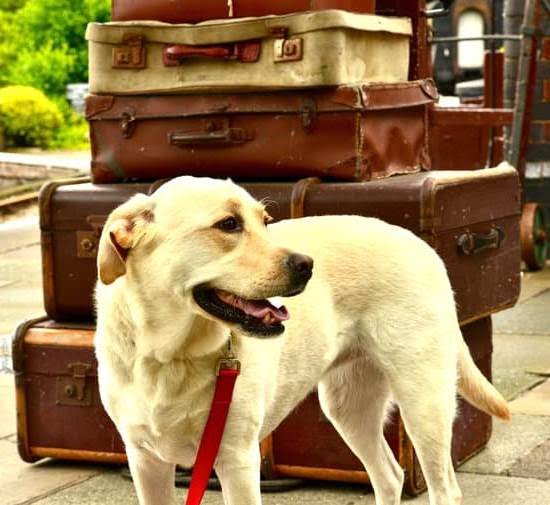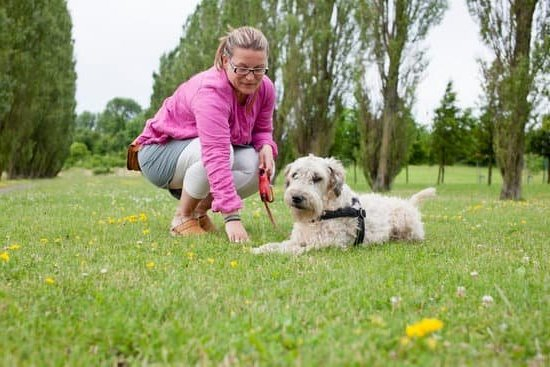Introduction
Police dogs have been part of law enforcement teams since the 1860s, when they were first used in France to help capture criminals. By World War I and World War II, they had become a popular tool for military as well as police forces around the world. Nowadays police dogs are still essential members of law enforcement departments, where their special abilities are leveraged to keep citizens and officers safe.
Police dogs are highly trained for specific tasks that only a dog’s sense of smell or hearing can detect. These tasks can range from tracking potential suspects to finding hidden objects or assisting with crowd control. When combing through rubble after an earthquake or disaster site, police dogs are able to search out trapped victims faster than human operators alone. In addition, they serve invaluable roles in drug detection, explosives detection, search operations and rescues. Their specialized skills make them ideal partners in areas that no human can work within such as dangerous environments with rabid animals present or tight spaces due to flooding or collapsed structures.
Police dogs also act as deterrents for crime because their presence often serves as enough of a warning for suspects and criminals to surrender without incident. They also provide emotional support for officers during high-stress situations like long surveillance operations or high-risk arrests of dangerous felons. Police dogs often receive special awards not only for their service but also for their courage and bravery displayed on the job each day.
This constant presence and loyal bond between the handler and four-legged partner further emphasizes the important role police dogs have in protecting communities today
Types of Dogs Used as Police Dogs
Police dogs, sometimes referred to as K9s or canine unit members, are commonly trained in one of four main disciplines: Detection, Patrol/Protection, Human Tracking and Search and Rescue. Each of these disciplines will vary depending on the type of dog being used.
Detection dogs are typically trained to detect illegal narcotics (such as marijuana, cocaine or heroine) explosive materials (such as bombs) or evidence related to a crime case. These types of police dogs use their keen sense of smell and ability to sniff out very small amounts of various substances that cannot be detected by human noses.
Patrol/Protection police dogs involve patrol duties such as apprehending suspects upon command from their handler; guarding designated areas; searching for lost persons or items; traffic control operations; and aiding in crowd control situations. Dogs selected for this purpose tend to be larger in size with short coats such as German Shepherds or Belgian Malinois.
Human tracking dogs are trained to track human scent through areas that may be challenging for humans to traverse, particularly in search-and-rescue scenarios. This specialty requires intense skill and often takes considerable time and effort to train a dog for this type of work. Breeds most suitable for this line of work tend to have longer fur (for protection against thorns), a friendly disposition towards strangers, an exceptional sense of smell and high levels of energy, including bloodhounds and coonhounds.
Search-and-rescue teams require some different skills than the other three types mentioned above. While tracking is a major component in any search-and-rescue mission (human or animal), these types of police dogs must also know how to locate people who may be trapped under rubble or debris caused by natural disasters such as floods or earthquakes – often while working with multiple handlers in rigorous terrain. Breeds best suited for search-and-rescue missions include retrievers such as Labrador Retrievers, Golden Retrievers and Flat-Coated Retrievers along with mountain rescue dogs such as St Bernards and Newfoundlands due to their enormous endurance levels needed for long searches over vast terrain.
Training Methods of Police Dogs
Police dogs are a type of working dog that is trained and employed by law enforcement professionals to assist in various aspects of policing. Police dogs, also commonly referred to as K-9 dogs, are trained to perform specific tasks and services for officers such as search and rescue operations, drug-sniffing operations, tracking and chasing down suspects, crowd control, protection, and even bomb and weapons detection. To ensure that these dogs remain reliable and productive members of the police force, they must undergo an intensive training program in order to be able to respond accurately to commands from their handlers.
Police dog trainers usually employ several methods during their courses in order to prepare the animal correctly for its responsibilities. They will typically begin with general obedience training in which the pup learns basic commands related to heeling, standing still, sitting on command, and retrieving items. As the training progresses further along it becomes more advanced and focused towards the tasks at hand with more intense instruction on detective work such as searching buildings or vehicles for drugs or other signs of illegal activity. Additionally, police dogs receive special training to develop crucial scent detection skills – they learn how different scents need to be asked out in specific contexts – as well as protection training so that they can protect their handler from potentially dangerous individuals if required. Finally, trainers also implement rigorous physical fitness regimes into the curriculum which keeps these working dogs fit and healthy for long hours of active service.
Contributions of Police Dogs
Police Dogs offer unbeatable assistance to law enforcement in a variety of ways, from search and detection work to apprehending suspects. Many police dogs are trained for particular tasks, such as specialized search and rescue, arson investigation, drug detection, explosive detection, tracking, and patrol.
Tracking is perhaps the most unique duty of a police dog. These K9s have remarkable olfactory capabilities that allow them to track scents with incredible accuracy over great distances. To enhance their natural instincts, they undergo extensive training that puts their noses to the test while searching out fleeing criminals or finding lost people or objects.
Drug detection dogs are also key players within police forces around the world. With modifications focused on sensitivity and accuracy being constantly made to sniffer dogs teams, they provide valuable leads in fighting all types of illegal trafficking—including narcotics trade and money laundering. Ultimately these canines significantly reduce the time needed for investigations.
Explosive detection is another important contribution from police dogs. Highly agile precision units composed of a single handler plus their canine partner may be sent into potentially dangerous situations where human lives could be at stake if explosives were present and undetected. Their services are also invaluable at public events like sporting events or concerts where large crowds congregate; bomb-sniffing dog teams inspect areas beforehand for any potential threats that could disrupt an event or injure someone attending it.
Finally, patrol service dogs are used for general surveillance duty concentrating on the prevention of crime and even antidrug campaigns in some countries like Colombia or Peru; relying on another highly sophisticated sense—hearing—they detect movements or activities that humans cannot identify beyond fences or obstacles making them great agents at random searches both day and night (urban scenarios).
Scenarios Where Police Dogs Are Used
Police dogs are typically tasked with assisting law enforcement officers in crime scene investigations and situation response. They are trained to track missing persons, detect the presence of illegal drugs or explosives, and more.
One common scenario where police dogs are used is conducting searches for people that have gone missing outdoors or if police need to locate a suspect in an area within an approximate location. The dog will be released from their handler, who will wait at a predetermined distance until the animal has pinpointed the person’s exact position. Depending on the skillset of the dog and its specialty among detection, such as tracking humans or sniffing out illegal substances, it can be very effective in locating both people and drugs/explosives.
Another situation where police dogs play an integral role is responding to active shooters or other high-level threats that may be present on-site. The dog’s identifying unique smell allows them to detect potential threats even when there isn’t anything visible. By systematically searching through the area, they can help officers identify potential safety risks before they enter into any dangerous areas without proper protection.
Police dogs are also frequently used during protests and sensitive situations as tickets due to their status as being non-threatening in appearance while still providing an effective means of security for medical personnel or crowd control operations. Their ability to remain obediently silent during these events has been proved invaluable for law enforcement organizations seeking not just a security presence but also peacekeeping measures and public order maintenance solutions.
The Social and Emotional Lives of Police Dogs
Police dogs are highly trained professionals, capable of performing a variety of duties. They are used in law enforcement activities such as tracking suspects, drug-sniffing and search and rescue operations. Police dogs also play an important role in community relations through demonstrations at schools, citizen groups and other outreach events.
The majority of police dogs are trained in obedience, scent detection and tracking. Once these skills have been mastered, they can then be trained to specialize in specific areas such as suspect apprehension or drug detection. They must be knowledgeable about their surroundings and able to focus on their tasks even under stressful conditions. Police dogs require long hours of training to become proficient at their specific duties. Aside from the typical obedience exercises, they typically spend several weeks doing drills where they practice search techniques with their trainers or handlers.
Police dogs also need to maintain a high level of physical fitness in order to perform well during deployments. To do this, they receive regular exercise including jogs or agility drills that keep them sharp and ready for service.
In addition to these practical considerations, police dogs also require significant psychological care due to the immense responsibility placed in them when it comes to protecting the public’s safety and property. They need bonding time with their handlers that involves positive reinforcement-based practices like playtime outdoors or cuddle sessions at home after a long shift so that both dog and handler can decompress together from stressful duties as members of law enforcement teams.
Care and Maintenance of Police Dogs
The care and maintenance of police dogs is just as important as the training they receive to perform their duties. Police dogs lead active lives and can be exposed to a variety of conditions, so it is essential to provide them with the necessary measures to ensure their health and wellbeing. First, police dogs should receive regular physical exams conducted by a veterinarian as well as routine vaccinations appropriate for the breed and age of the dog. Second, in order to keep police dogs fit and healthy, owners should ensure that they are getting adequate exercise on a daily basis, such as running or agility activities. Third, providing an appropriate diet, based on the size and needs of each individual dog, is necessary for optimal nutrition. Fourth, since police dogs require mental stimulation in order to prevent boredom and possible misbehavior due to excess energy, it is important to engage them in bonding activities such as walking or playing fetch. Finally, providing socialization classes or basic obedience classes can help police dogs learn how to interact appropriately with passersby while on duty. With proper care and maintenance of police dogs, organizations can ensure that these hardworking animals are able to operate at peak efficiency when out in the field protecting citizens from crime and danger.
Conclusion
Police dogs are invaluable partners to law enforcement teams around the world. They are extensively trainied to perform a variety of tasks, including tracking down fugitives, detecting drugs and explosives, scent-specific searches for missing persons, and providing an intimidating presence during confrontations with suspects. Police dogs are also trained in obedience, agility, protection and other specialized skills that allow them to serve as active partners in law enforcement operations. All of these various roles have made police dogs vital in apprehending criminals and keeping communities safe on a daily basis.

Welcome to the blog! I am a professional dog trainer and have been working with dogs for many years. In this blog, I will be discussing various topics related to dog training, including tips, tricks, and advice. I hope you find this information helpful and informative. Thanks for reading!





